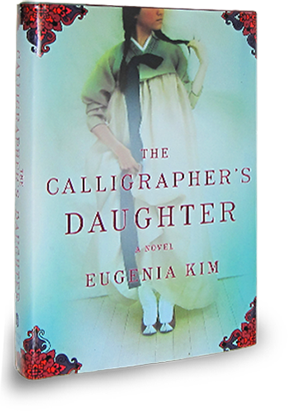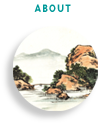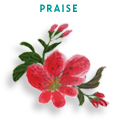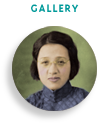


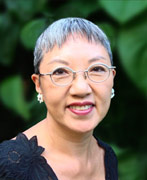 Eugenia Kim is the daughter of Korean immigrant parents who came to America shortly after the Pacific War. She has published short stories and essays in journals and anthologies, including Echoes Upon Echoes: New Korean American Writings. An MFA graduate of Bennington College, Eugenia teaches fiction at Fairfield University's low-residency MFA Creative Writing Program. She lives in Washington, D.C. The Calligrapher’s Daughter is her first novel. To learn more about her second novel, The Kinship of Secrets, see www.eugenia-kim.com
Eugenia Kim is the daughter of Korean immigrant parents who came to America shortly after the Pacific War. She has published short stories and essays in journals and anthologies, including Echoes Upon Echoes: New Korean American Writings. An MFA graduate of Bennington College, Eugenia teaches fiction at Fairfield University's low-residency MFA Creative Writing Program. She lives in Washington, D.C. The Calligrapher’s Daughter is her first novel. To learn more about her second novel, The Kinship of Secrets, see www.eugenia-kim.com
The Calligrapher’s Daughter is your first novel. Why this story and this subject?
Like many immigrant parents, mine often talked about their lives in the old country—for them, Korea. They had only intended to stay in America for a year, but the outbreak of the Korean War changed all that. Three of my siblings were born in Korea; three of us were born here, including me, the youngest. My parents’ stories seemed to carry an urgency meant to instill a Korean identity that was seeping from us with each new American word learned, each Korean word lost. Tales about fending off starvation by eating mudworms for protein, about symbolic dreams and learning the high language of the king’s court, or the secret story my mother never told my father about the horrors of living with his parents while he studied theology in America, spanned the gaping generational and cultural distances between us. I didn’t always appreciate my parents, but their stories always captured me.
About a dozen years ago I started writing a true ghost story about my maternal grandfather. The story kept growing and wouldn’t let me go. Though that writing is still unfinished, it was a touchstone for the wealth of family lore I’d heard throughout my life. I also quickly discovered there were very few books in English about Korean life during the Japanese occupation and even fewer from a woman’s point of view. With Asia’s long tradition of suppressing the female voice, this vacuum felt more like a silence than an oversight, intriguing me further. The writings grew and I soon realized I couldn’t do justice to the vividness of my family’s stories unless I could make them come more alive—through fiction.
Your mother passed away in 2003, before you finished writing The Calligrapher’s Daughter. Did she know you were working on this book? Did writing about Najin—who, while fictional, is based on the life of your mother—change the way you thought about your mother’s life and experiences?
My mother was a writer herself and immensely creative—from the delicate dumplings she shaped to the Easter dresses she sewed for five daughters. She always encouraged us in arts and education and knew I had gone back to school to study writing and literature. I remember her vague reaction when I asked her permission to write her story. She was amused that I was interested in yaenal-dae, the olden days, and shrugged as if she didn’t care or as if it were inappropriate to show she might have been pleased, or perhaps she didn’t believe it would come to anything. I was fortunate to have had opportunities to interview my mother about several events and details before she passed. Sometimes she’d be too impatient to answer the simplest things I’d ask, such as what days were market days and how did they bathe? Her English was better than my Korean, but only slightly, so our conversations were often half-grasped and just as often frustrating. Was she proud of my work and my writing? We rarely spoke of such things in my family, an aspect of her character and upbringing I came to accept with broader understanding when I worked on this novel. So yes, and yes. It’s like the ultimate case of putting oneself in another’s shoes. This writing radically changed my regard of my mother and my father (who died in 1987), as well as my own Korean American identity, in the most enriching, positive way.
Najin’s father, the calligrapher Han, is extremely traditional in his ways. Do you think he is afraid of change, or simply stubborn? What does he gain by maintaining old customs?
I think Han is less fearful than prideful and righteous. Perhaps, like anyone in a maelstrom, he clings to what he knows best because that’s all he sees is available to him. Unlike Najin, whose life began at the dawn of the Japanese occupation, Han as a child had witnessed the serenity of aristocratic life that was governed by laws fully detailed in the classics he studied and lived—not unlike any orthodox religious life. I think that Han does find peace, and a surprise discovery of a modern ability to love and respect beyond the constraints of tradition.
You explore faith in The Calligrapher’s Daughter with great interest and sensitivity—Najin’s family is Christian, though they also hold some Confucian beliefs, and others in her neighborhood are Buddhist. Why do you think Christianity took root in Korea? How does Najin’s father justify his conversion?
It’s a little known fact that Korea is the only nation where Christianity began without the benefit of a missionary presence. Sometime in the late 1600s, Korean emissaries making their regular trek to China for exchange of ideas and goods brought back Christian books and tracts. Many Korean scholars and statesmen scoffed at the Western religion, but others were stirred by the writings and converted, baptizing themselves.
Until the modern age, Korea remained an isolated agrarian nation with rampant corruption in the landowning elite. It’s likely that the promise of a heavenly reward excited the imaginations of peasants and slaves who shouldered extreme poverty and hardship. Once the missionaries were ensconced, their humanitarian programs generously met the people’s pressing needs. Many Christian lessons parallel the orthodoxy of Neo-Confucianism, which is uniquely Korean in its strict interpretation of Zhu Xi’s Confucian doctrine. Christianity’s tenets, and Catholic and Protestant morality, weren’t that different from existing practices of right living, which made it easier for Koreans—and the calligrapher Han in particular—to believe.
How has your reading life informed your writing life? Which writers have most influenced your work?
Reading fuels the writing in the same way as seeing a great movie, listening to music, walking the beach or seeing an art exhibition, just more so. I became a writer later in life so it’s hard to say which writers were most influential, but authors whose books left lasting impressions include James Baldwin, Maxine Hong Kingston, Toni Morrison, Fyodor Dostoevsky, Flannery O’Connor, Robert Heinlein and Alexandre Dumas. Some of the Korean and Korean American writers whose work has been meaningful to me are Younghill Kang, Induk Pahk, Moo-Sook Hahn, Chang-Rae Lee and Susan Choi.
